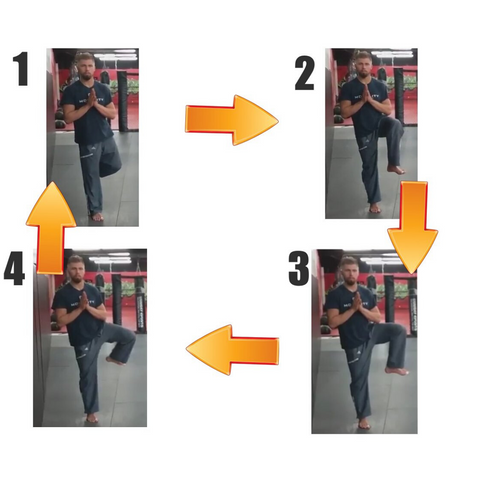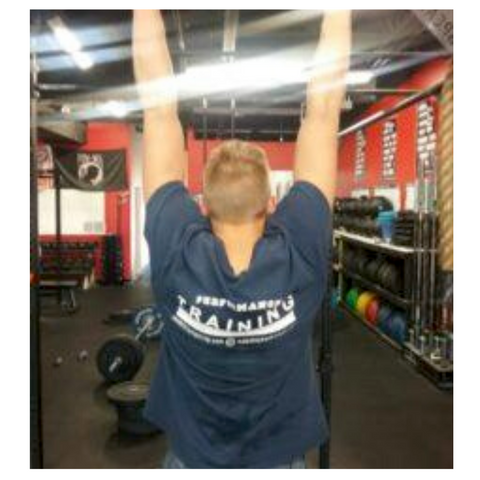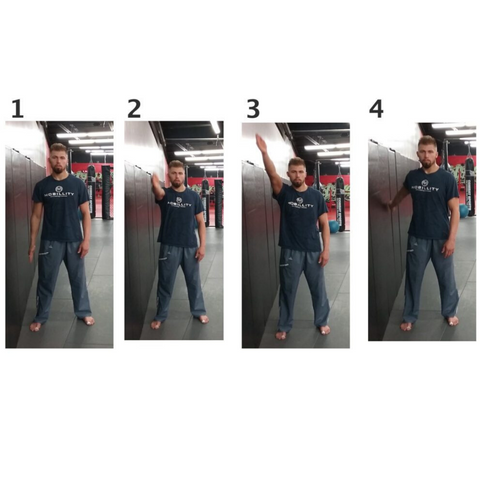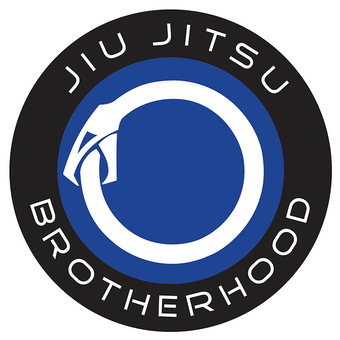This article was written by fitness and mobility expert Billy Edelen. You can check out his blog on mobility here.
Adequate joint mobility is essential for sustainable training and high-level performance.
Just like other training variables such as sports skill work (drilling, situational and live rounds) strength, power, and cardiovascular endurance, mobility is something that must be on the training docket. You are severely limiting your jiu-jitsu capabilities and mat longevity if this particular element is neglected.
It's especially important in a sport such as BJJ because of the infinite amounts of complex body movements it contains. The more range of motion and control you have of your joints (which as you will see below is the essence of mobility) the more defensive and attacking options you'll have.
Mobility as a Strength Enhancer
By having a solid base of core stability and strength (two areas that are covered by the sport itself because of the emphasis on lifting and controlling another human body as well as your own), mobility can then become a focus of our training.
This gives our joints built-in protection from injury by increasing the usable amount of range of motion (ROM). Also, by having adequate and even excellent ROM in a joint we can exhibit our strength in more ways and in complex movements because we have more range to do so!
Please note that mobility is not the same as flexibility. Mobility refers to the active, neural control of a joint in space throughout its ROM, while also being able to exhibit strength through that range of motion.
Flexibility, on the other hand, involves passively moving a joint through a range of motion, with the use of gravity (e.g. the splits) or an external load.
Mind / Body Connection
Mobility work is tremendous at helping you develop a "mind-body" connection. It is important to practice mindfulness when performing this style of work. Being keenly aware of the movement and the part of the body which is being focused on while also monitoring the connection with the rest of the body is key to integrating this into controlled, conscious movement. This is something that is closely related to the next component, breath awareness.
Breath Awareness
Mobility goes hand in hand with breath awareness and mindfulness - all three of these are instrumental for living a healthy life as well as reaching your peak athletic performance, especially in the grappling arts. Bringing a simple awareness of how our breath is flowing is the first step in bringing presence and awareness of the situation.
Our goal when performing all moments should be to keep an even, relaxed breathing pattern.
I would classify my biggest skill in BJJ as the ability to understand my own energy in relation to that of my opponent. This understanding is based almost entirely on the breath. I know that I can simply remain aware of my breathing throughout sparring that it gives me a sense of detachment and a bird's eye view of all the situations I encounter. I can most clearly see the 'reality' of what is occurring in the roll without making a judgement on it.
Just by maintaining an awareness of it, your breathing will automatically become slower and more even. It will also shift your nervous system into a more parasympathetic (relaxed) tone.
In this relaxed state, you will be much more aware of the muscular tension in your opponent's body. This will allow you to predict his movements and feel where his balance is compromised. It will also give you a much greater chance of performing the smooth and coordinated actions necessary to solve the unique puzzle the roll presents at that moment.
Nostril Breathing
When possible try to both inhale and exhale through the nose while imagining that you're breathing deep into your belly. Breathing through the mouth can activate the sympathetic nervous system and cause the 'fight or flight' response. When this occurs in your physiology you become lost in the moment rather than soaring above and seeing it clearly.
Mobility and Neural Control
Having more hip mobility allows us to exhibit that actively controlled strength throughout the range of motion. This takes neural control. We should never train strength as might (especially when deadlifting and moving serious weight!) but rather as a mindful skill where we integrate the nervous system. As I touched on in the mind/body connection earlier awareness of our movement and breath allows our body to simultaneously absorb the movement while also downloading how we are performing the movement. This then lays down the neural circuitry that is commonly viewed as "muscle memory."
In the case of the hip CARs I cover below this neural control then gives more innervation throughout the leg, with the leg becoming more 'arm and hand' like. You will notice you begin to feel your feet more especially as you integrate CARs of the ankle, which is the same premise as for the hip. As a BJJ player, this gives you more tools because you become more in control of your own body and ultimately the body of your opponent, the whole premise behind the grappling arts.
Mobility and Increased Options of Attack and Defense
There are few sports in which the feet are capable of working like hands. Most sports involve the feet being used as the primary means of locomotion (running and walking) and in some other sports for jumping. In these cases, there is only so much hip mobility that is necessary for the athlete to be healthy and perform these movement patterns in the correct fashion.
In BJJ, however, once the match hits the ground the orientation of the body is left up to infinite possibilities. This makes hip mobility a crucial element for having more options for attack and building an adequate defence. For example, when playing a guard-based game more hip mobility gives you more range of attack. You create more angles of attack because you not only have the ability to move your legs through a greater range of motion, and you also have the ability to control and exhibit strength throughout these ranges of motion.
Having greater mobility also helps protect the body from submissions. Since you have more ROM at your disposal you are less threatened by attacks because your body has them downloaded in its neural circuitry.
For example, a person who lifts a lot of weights but has minimal functional movement may have the power to escape some scenarios, but be much more vulnerable in many others.
A classic straight arm-bar is a great example of this: a bodybuilder will have trouble against any sized opponent applying the move correctly because the movement of a bicep curl has limited maximal strength output, insufficient to combat against the person's full body against their elbow joint.
Compare this with an athlete who does a lot of hangs for their shoulders as I detail in the shoulder mobility section. Especially if they do the one hand variation where they move their shoulder join in this elongated position, they will have the motor control and the ROM at their disposal to move their shoulder joint in order to protect against the force of the attack.
Bang for Your Buck Mobility Exercises
Below I cover some mobility exercises I feel that will give you a lot of bang for your buck, A small time investment should yield big results. I focused only on the hips and shoulders as they are by nature the two most mobile joints in the human body. Incidentally, in most people in the western 'deskbound' culture, they are usually the tightest and most immobile joints in the body.
Hips:
CARs
Although synonymous many times with flexibility, mobility is the active ability to control and be strong in a stretched position at the outer ends of a range of motion (ROM). Flexibility is the passive ability to reach a range of motion, but it’s essentially useless when performing activities under load.
In Functional Range Conditioning (FRC) lingo, what I’m demonstrating are controlled articular rotations (CARs) of the hip joint. This involves moving the joint through the full ROM that is available. By moving any joint through its full ROM it allows for increased tissue health and viability.
In simple terms, moving a joint through full ROM allows for it to function better. It helps to secrete synovial fluid, which can be likened to what oil does for an automobile's engine, and increase circulation and nervous system (mind/body connection) conduction to this area of the body. This helps to create more of a mind/body connection and control of our system especially when we tie in breath awareness while doing this work as I explained above. By performing more CARs throughout your day this will allow you to achieve greater ROM and mobility, both markers of tissue health.
Therefore, performing CARs of your hips throughout the course of the day can help offset and ultimately vanquish the pain and tightness of the low back and hips that is synonymous with the prolonged sitting in our culture.
CARs procedure:
- Balance on one leg or stand next to a wall for support.
- Lift knee
- Rotate knee away from the other leg. Once it can go no further internally rotate it in the socket and then bring the knee down towards the other leg.
- Repeat opposite direction
- Do 5 circles forwards and backwards

The hip CARS
Final Hip CARs Tips
Some basic tips on how to utilize this exercise and all of those to follow for your benefit:
If possible avoid the chair at all costs! But if this is unavoidable every 30 minutes or so that you’re stuck in a sitting position (be it your desk chair or a long commute) perform several repetitions as shown. Remember to tighten the core and to be slow and controlled in the movement while generating tension within the area being worked. This should result in a more fluid movement of your hips, which will directly tie into your low back health.
90/90 Position
The 90/90 position and isometric contractions will be foundational in increasing the usable strength in the "end" of a range of motion (ROM).
You'll find me positioned in the accompanying video with one leg externally rotated in front of me it the other leg internally rotated behind me. This is the basic 90/90 position mentioned in the previous post because of the 90-degree angles formed in this posture.
The back leg is propped up, which internally rotates the hip - something which is lacking in the sedentary, desk-bound person. The block or object propping this leg up can be of varying heights depending on how mobile this joint is for the person. What we want is for your leg to be put in a range of internal rotation that is slightly challenging to induce a stretch in this region.

The 90/90 position
PAILs
Next, we push our heel downwards into the block while keeping the knee in place on the ground. This contraction is stimulating the external rotators of the hip in this extended ROM. In essence, we are getting stronger in a weak, lengthened ROM. This is the definition of mobility. This movement is called PAILs. I'll save more of the science and explanation of this for another time.
Protocol
Perform 15-second contractions into the block or object interspersed with relaxing and letting the block work its magical passive stretch. Do about 2 minutes worth of contractions and then switch legs.
RAILs
Rather than pushing our heel downwards into the prop to work the external rotators as we did in the last section, we are now going to lift the heel upwards while keeping the knee positioned on the ground. The hip, oblique, and glutes should feel engaged. Position both hands in front of you while clenching the fists to irradiate tension throughout the core to encourage the engagement of the musculature that contributes to this movement. If this is too difficult place the hand opposite of the hip being worked a place it on the ground to support your torso. You should try to keep your torso as erect as possible, in both variations. This movement is called RAILs. Again I'll expand on this in the future.
Protocol
Perform 15-second contractions followed by relaxation where you allow the block to sink you deeper into the stretch. Do about 2 minutes worth of contractions on both legs. Remember, we are trying to lift the heel. Even if you can’t lift it that is OK! Because by trying to lift it, the nervous system and musculature necessary for this movement to be performed are engaged, which will ultimately allow for you to achieve the lift-off.
These intense contractions coupled with the prop helping us stay in this position at the outer limits of our ROM tricks our nervous system into embracing this new ROM as something that can be used under tension. Our body has in place inhibitory mechanisms called Golgi Tendon Organs that relax a muscle when it has achieved an intense contraction. By using prolonged isometric contractions we are teaching the nervous system that it’s safe to not only access more ROM, but do it under load, stress, and tension. This is mobility folks.
Some Last Tips
If you’re feeling cramping in your hip, oblique, and/or glutes then you’re performing this correctly. Embrace the tension. Embrace being uncomfortable, for this is where growth lies. Not just in exercises such as this, but being uncomfortable forces us to push past our limits and become better versions of ourselves. We all remember those early days as white belts when it was simply about showing up and surviving! Same applies here!
Begin performing these daily. Build it as a small habit first and then let it grow into a bigger one. Your hips will thank you and your life will be more vibrant as a result of moving more freely and efficiently.
Shoulders
Hangs
I first got into using hanging from a pull-up bar for not only shoulder mobility but really for spinal decompression and allowing the body to naturally align itself. Using natural energy (gravity) and relaxing your entire body allows you to lengthen from crown to toe.
Especially after playing a sport like basketball growing up where I was continually compressing my spine from the sport itself (practices, games, individual work) strength and conditioning work (weights, plyos, running) my spine was matted down with no time even spent on lengthening it. So my body got compacted and tightened from this.
It's been instrumental in lengthening my fascia and allowing tissue within the body to naturally align. Of course, it focuses more on the shoulders but by using this full body relaxation you will get the decompression benefits.
Now that I'm back into a strength cycle where I"m incorporating the nuts and bolts of strength training ( carries hinge, squat, push-pull, lunge) I'm compressing the spine again. This isn't a bad thing! Only when done in excess is it so. So I'm approaching this with a lot less ego. I mean a LOT Less ego. Using hangs in between lifts and exercises to lengthen myself and keep that softness within the hard training. It's a tremendous tool after some hard rounds on the mats before doing some other mobility and down-regulation work because it helps to lengthen all of the matted down tissue.

Passive Shoulder Hang
This exercise is simple enough but here are a few simple cues.
Focus on gripping the bar tightly. This will help to relax the rest of the body so you can deepen the stretch and decompression.
Keep your ribs locked down. Do not let them flair out. Cue this by tightening your midsection as if you were going to take a punch. This is an athletic midline position that is essential for overall spine biomechanics.
By keeping ribs locked down this allows for the lengthening to occur where we want it. In the shoulders and rest of the body.
Allow hips and pelvis to sit naturally.
Aim for an accumulation of 5 minutes a day chunked into manageable bursts.
CARs
These follow the same premise of the hip CARs. We're moving our joint through its full ROM.

Shoulder CARS
Procedure
Specifically for the shoulder joint, we must focus on keeping the ribs locked down as I covered above in the hangs section.
Keeping hips extended forward and a neutral spine-pelvic alignment with a straight arm and squeezed hand with fingers extended begin to circle shoulder joint.
By being up against the wall it gives us immediate feedback so that we challenge ourselves to continually push the joint to the edges of its ROM, for this is where our growth and gains will be experienced.
Focus on keeping shoulder down and away from the ear, while keeping an organized scapula.
This can be done smoothly with minimal muscular engagement or maximal muscular engagement. Play with it. Find what fits you best.
In the case of using tension to increase your ROM seek that muscular tension where it feels borderline uncomfortable. This is where the neuromuscular system is being challenged and this should be accepted for it will allow for improvements to occur. The same way when you first listened to a lecture in school and had a hard time taking everything away from it, this is the same thing we’re doing. The nervous system is being challenged to allow this movement to occur at the limits of your ROM but eventually, after time and repetition, we will acquire the right neural pathways to make this happen in a more smooth fashion.
In sum, we’re simply circling our shoulder joint through its full ROM in a slow, controlled fashion where we’re seeking and embracing that tension.
Prone Isometric Holds
For shoulder mobility, Kyphotic posture (hunched back) and opening up the chest.
This helps to open up and strengthen the upper back and posterior shoulder muscles. These get really tight from grappling. This series is great at counteracting the kyphotic (rounded) posture that's necessary to protect yourself on the mats and to work at the desk and to drive a car...
Procedure
- Prone with forehead placed on the mat
- Abs engaged. Think of bringing the belly button in towards the spine.
- Extend arms completely in front of you and lift as high as you can off the ground.
- Squeeze shoulder blades together as if you’re squeezing something between them
- Hold for 15 seconds
- The procedure is the same except arms held at different placements

Prone Isometric Holds
Position 1: straight ahead
Position 2: 45-degree angle from previous
Position 3: 90 degrees (think rear fly position)
Position 4: 135 degrees (in between previous position and arms being near side/hips)
Position 5: arms are positioned near sides/hips
What does this do?
Engages posterior shoulder musculature and upper back, which loosens and opens up chest/anterior shoulder, allowing for an increase the overall joint mobility of the shoulder, open up the chest, and offset the kyphotic posture brought about my excessive computer, sitting, and cell phone use in our society.
Tips
2 to 3 sets at a time
Don’t be afraid to feel shaky and borderline crampy in between your shoulder blades! This is where growth and gains are found!
Recommendations
When to Place in Your Day and Training Sessions
Mobility training is an area of training you can't overdo. With your strength and conditioning work, you have to be mindful of how much intensity and volume you utilize in your training. The more mobility you work into your routine and during the day the more it will "stick" because you're teaching the nervous system it can reach those ranges safely.
I too often see people show up to a jiu-jitsu training for 10 minutes before class. This time is the first time they've paid conscious attention to their bodies. This is where our approach must change! I recommend before training using the exercises I covered as well as after. One other time during the day (either at night if you train in the morning or in the morning if you train at nights)I feel is a feasible option. 5 min of work here and there throughout your day will go a long way.
Yin/Yang
Grappling by nature is a "tightening" sport. Your body creates an armor of tension to protect itself against attack. This is another reason why mobility and softening work is of paramount importance. Especially since as we are we harden and become tighter, we must make deposits on the mobility and softening side in order to keep our balance where we want it.
I like plugging a lot of concentrated mobility work when I'm doing my strength training sessions. I utilize my rest period between sets (anywhere from 2 to 5 minutes depending on the exercise) for different mobility exercises. I especially like this because the strength sets are very much a yang or hard activity. Utilizing the rest time is softening or yin work.
After these sessions, I feel very well rounded in my body's ability to be strong and pliable as I hit both ends of the spectrum! This is especially important in BJJ as a roll can take on so much complexity that it requires for you to exhibit and express your body differently, be it pure strength or more flowing movement.
What I've also found is that they complement one another. The mobility gives me more freedom of movement to exhibit my strength. The strength work gets my motor units to fire at their highest threshold so I can get a good contraction when expanding my range of motion with different exercises. This high threshold tension allows communication to the nervous system that it is a safe range for my joints to move into. This is why I classify mobility work as a way to enhance and display strength. It isn't a coincidence that Dr Fred Hatfield (AKA Dr Squat) succeeded at moving over 1000 lbs on the back squat after doing a hip capsule mobilization when he failed on his first two attempts. He had more room to drop into the squat and was able to engage more strength in this ROM.
Final Thoughts
My final recommendations for implementing mobility work into your training and ultimately life as a whole is to maintain consistency. You never set the world on fire in one day. It takes continual diligence and focus on something (like showing up to your BJJ training multiple times per week, getting your drilling in, and always having areas of your game you're seeking to improve) for there to be a lasting change.
Approach the implementation of mobility training with this same attitude. Avoid having these profound impatient expectations. Instead, show up, do the work and be excited when you start to feel more lubricated and ready to go at all times. You'll find you'll need less time to warm up for an activity because you're keeping your body primed for optimal movement.
As Miyamoto Musashi speaks about in The Book of 5 Rings your everyday stance should be your fighting stance. His sentiment is that you should always be ready. Priming the body consistently throughout the day will make this a reality and will give you a better chance to continually display your skill on the mat and feel good while doing it!










1 comment
I love bjj it’s my passion